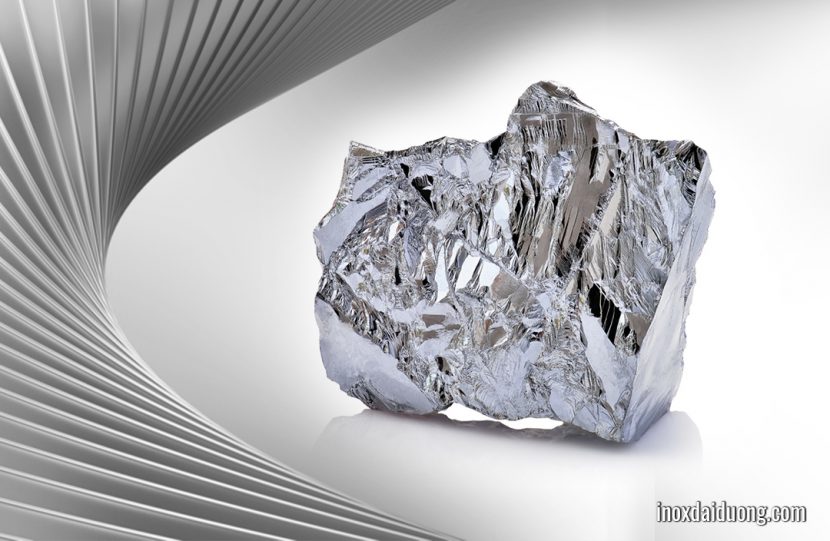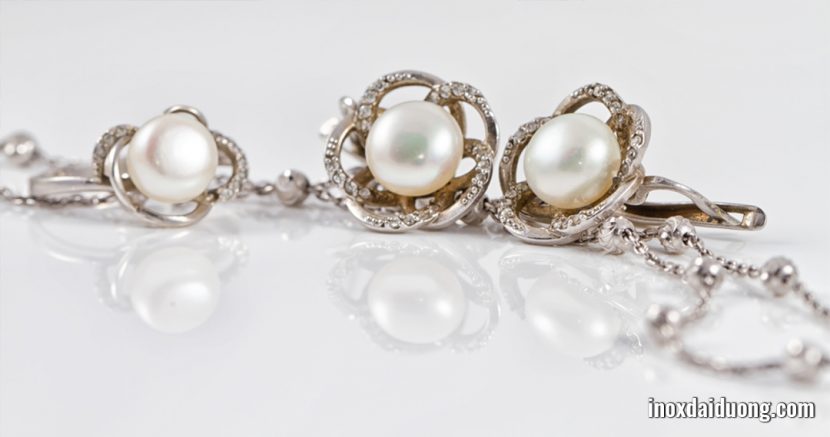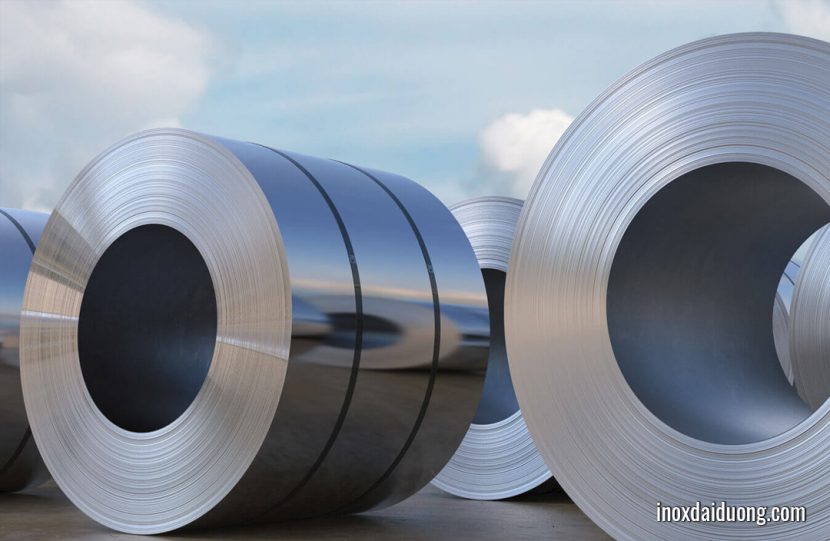As we all know nickel is one of the components of stainless steel, but how does it play a role in this wonderful material? What are its applications in life today? Are they really toxic? The following useful information from Inox DAI DUONG editorial board will answer these questions.
Nội dung chính
What is nickel?
Nickel is one of five metals in the ferromagnetic group, also known as nickel, with the chemical symbol Ni. Nickel is white-silver, usually in compound form because in its compound form it is inert with oxygen gas while in its pure form it acts on oxygen. Nickel hard, shiny and smooth, malleable and inlaid, melting at high temperatures of 1455oC, so it is applied quite a lot in life.
In terms of chemical properties, nickel resistant to corrosion should be applied more on anti-rust products.
Are they really toxic?
For health, nickel is both advantage and disadvantage . As we know, in some foods we eat every day, small amounts of nickel play a necessary role in our bodies. They participate in the metabolism, especially protein, contributing to the creation of important lipids, hormones. Nickel can be found in small amounts in nuts, beans, chocolate …
However, if tolerated or exposed to an excessive amount of nickel, it leads to nickel poisoning. Symptoms of nickel allergy are often seen when wearing fake jewelry, buttons, clothing accessories or nickel exposure through the skin. there will often be contact dermatitis, local rash, itching … Severe nickel poisoning can cause damage to the kidneys, liver, lungs.
Alloys of nickel
- Nickel-Crome compound: These alloys are 600, 601, 625 … With nickel content> 50%, they have good corrosion resistance as well as heat and force resistance.
- Nickel- Iron-Crome compound: The common alloy marks are 800H, 800HT. This alloy has a nickel content <50%, so the characteristics such as antioxidant, heat resistance, bearing strength are also at an average level.
- Nickel-copper alloy: In addition to these two elements, there is a small amount of iron, silicon, magnesium and caron. The percentage of nickel in the alloy up to 70%. This type is used in harsh environments, seawater or environments exposed to chemicals and experiments because the antioxidant level of this alloy is very high. The common alloy marks are 401, 404, 405 …
What is the nickel plating process?
Nickel plating is covering with a layer of nickel, so this performance helps the metal surface like iron and steel more shiny, clean, antioxidant and to increase product value.
There are many methods for nickel plating such as polished nickel, matt, nickel-crome plating, chemical nickel plating. Before the plating stage, manufacturers also need to conduct cleaning and smoothing of metal surfaces, washed with oil and meticulously elaborately. Then you can get quality nickel plating.
Nickel plating is applied in jewelry, garment accessories, decoration, price, shelves … to save the cost of raw materials but also helps the product to be better, durable and aesthetically pleasing.
Nickel applications
Nickel and nickel alloys are widely applied in all areas of life. They are present from almost small items such as coins to professional equipment such as chemistry, medicine …
- Jewelry: Nickel is used as jewelry, accessories worn or worn with clothing for trendy. Thanks to its durable, non-oxidizing, shiny properties, the price is much cheaper than gold and silver so they are often chosen by the female.
- Coins: Almost every coin circulation in country is composed of nickel alloys. They helps the coins not oxidizing when exchanging between many people, used for many years without the need for continuous production.
- Medical field (such as supplies, medical tools, orthodontics …)
- Manufacturing field: magnets, batteries, motorcycle parts
- Keys, locks, hinges …
- Technological products (phones, laptops)
- Stationery (paper clips, staples …)
- Kitchen industry
- Stainless Steel
The important role of nickel in stainless steel
One of the most common applications of nickel is to join as a major ingredient in the production of stainless steel, especially austenitic stainless steels. Like chromium, nickel plays an important role and is an indispensable element of the outstanding features of stainless steel that we know today.
Nickel helps create a glossy, smooth surface for stainless steel. The mechanical and physical properties of steel are more stable and durable over the time thanks to the presence of nickel. In addition, it is also a factor that enhances the oxidation resistance of steel thanks to its inertness to oxygen. Therefore, stainless steel is not easily corroded by its surroundings.
In stainless steel, depending on the grade of steel, the percentage of nickel may vary. The higher the percentage of nickel, the more its durability is proportional. It can be said that the great properties that stainless steel brings to our lives today cannot be without the great contribution of nickel. Nickel plays a very important role in the stainless steel manufacturing industry.
Source: Inox Dai Duong
Vietnamese: https://inoxdaiduong.com/niken-la-gi/






CÔNG TY CỔ PHẦN QUỐC TẾ ĐẠI DƯƠNG O S S
Inox Đại Dương cam kết cung cấp vật tư inox đạt chuẩn – đúng nguồn gốc – đúng chất lượng, giúp doanh nghiệp yên tâm sản xuất và nâng cao uy tín thương hiệu.
Nếu bạn cần hỗ trợ về sản phẩm hoặc báo giá nhanh, vui lòng liên hệ với chúng tôi qua thông tin dưới đây:
Xem chính sách nội dung